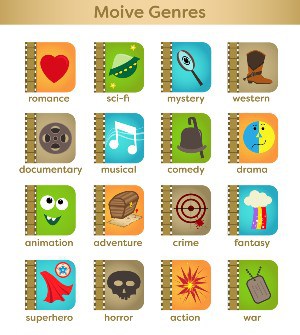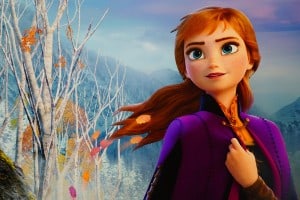Huge Movie Database
For Movie Lovers Everywhere!
All About Movies
A movie is a story or event recorded by a camera as a set of moving images and shown in a theater or on television; also know as a motion picture. The seven stages of film production include:
- Development
- Financing
- Pre-production
- Production
- Post-production
- Marketing
- Distribution
The history of modern culture is rife with depictions of visual art in different formats. Humans have always been drawn to creating and viewing pieces of art that can be shared with the masses as a form of expression, whether it is simple pencil sketches, innocent watercolors, impeccable oil paintings, or grand statues of utmost historical value; movies and films are an extension of this art form.
A movie can be defined technically as an electronic signal depicting in-motion graphics, images, or text compiled together in a steady stream that can be viewed on a screen, thus giving rise to the term "motion pictures." But for the average person, the idea of a movie is better understood as a form of visual art that heavily relies on images and sounds to convey stories or instruct the audience.
Every culture has its own unique set of values and beliefs, but regardless of these differences, every culture can spread its beliefs thanks to the technology it has access to. Movies have been extensively used to convey this message.
These motion pictures are used as cultural artifacts, produced on specific demand to promote intercultural dialogue. They can be regarded as a significant artistic medium that offers entertainment as well as historical significance by visually documenting their current period mindset, cultural beliefs, and life drama.
That being said, there are different types of movies that have been historically created to convey the message or emotions of their creators. The majority of movie enthusiasts argue that the best films are the artistic and individual presentations of a great director's personal views of the world around them.
But the cinema serves a variety of social purposes as well, and its "art" has benefited numerous genres of movies that do not necessarily aim to be works of art but instead serve as entertainment. And many small businesses support the motion picture industry from makeup to props, animation, post production and many more.
What Are The Different Types Of Movies?

The intended purpose of these movies has led to their classification into distinct "modes" or "types of movies." There are three basic types of movies: Fictional, Experimental & Animation, and Documentaries.
These three modes can each be further broken down into genres (i.e., categories of stories or arrangements that are well-known).
The mode that is most frequently referred to as simply "the movies" is fictional. It has adapted the storytelling techniques that have always been used in culture and developed a variety of cinematic settings and languages to tell its stories.
The experimental movie mode encompasses the newer movie-making techniques. It explores and pushes the technological boundaries to create its art form. The experimental mode tests the limits of technology currently available to tell its stories; it includes non-photographic animated and computer-generated movies.
Last but not least is the documentary mode, which draws heavily on cinema's ability to convey events in the world while incorporating the strength of the motion picture.
So the 3 main types of movies are:
- Fictional
- Experimental & Animation
- Documentaries
You can get more detailed information on these three motion picture types below:
What Are Fictional Movies About?

The most significant narrative artistic venture of the past century is undoubtedly the motion picture. These moving pieces of art replaced earlier narrative media like oral storytelling, novels, staged melodramas, curiosity cabinets and museum exhibits, and epic paintings. These entertainment forms persisted into the twentieth century and were joined by radio, television, and comic books, but the motion picture ultimately came to rule them all.
Movie Genres Around the World
Although movies have developed their own genres, the majority of them are inspired by models found in other arts, particularly literature. A clear distinction in movie genres helps audience members identify with the movie's settings.
Movie studios began focusing on genres in order to better control production after realizing the demand from their audience. They recognized the pattern that if a specific genre movie gains commercial success, the following movies in a similar genre rate far better among competitors.
This helped presell their motion pictures to audiences who returned to the cinemas for their weekly dose of entertainment. This also helped studios cut production costs by reusing sets, costumes, and other materials.
For example, a studio that decided to produce six police thrillers in a single year could plan its production process effectively to save time and money. The studios were also able to assign the same personnel to specific genres, allowing writers, directors, technical crews, and actors to develop a routine that frequently led to quicker and better filmmaking from one project to the next.
The conundrum of the fiction film is perfectly encapsulated by genres. They promise to give a waiting audience something that is both similar to and, at the same time, very different from what that audience has previously enjoyed. The most well-regarded movies are frequently those that relate to a genre's conventions before defying them in the pursuit of concepts and visions that have never been realized in that manner before.
Baz Luhrmann's Moulin Rouge (2001), Arthur Penn's gangster film Bonnie and Clyde (1967), Robert Altman's comedy M*A*S*H (1970), and Quentin Tarantino's western The Hateful Eight (2015) are all examples of commercially successful genre-shattering productions.
The creation of highly centralized studio systems like those in Hollywood or India typically results in the development of well-formed genres. However, they are less significant in countries where individual producers are dominant.
In the French film industry, most films are single-effort productions. This method of filmmaking allows for the creation of much more revolutionary works, as evidenced by the films of the French New Wave of the late 1950s and early 1960s.
Hollywood Movies: A Quick Timeline
In the early twentieth century, all major movie productions were centered in France, but by 1920, the United States had taken over. As directors and celebrities moved to Hollywood, American movie studios began to grow to their peak in the 1930s and 1940s and started to own extensive theatre chains.
In the 1950s and 1960s, there was a new internationalism in filmmaking, which coincided with the rise of the independent filmmaker. Since the 1970s, the sophistication of Hollywood productions has increased significantly, and the American film industry, with its vast technical resources, has continued to dominate the international film scene to the present day.
Genres in Hollywood
The majority of genres in Hollywood productions have a subject or setting that can be used to categorize them, such as western gangster films, police thrillers, science fiction movies, or social issue films. But some are categorized into groups based on the specific narrative they aim to forge.
A show business setting or theme, for instance, is frequently present in musicals, but their subject matter is not so strictly constrained. In a similar vein, melodrama covers many social issues and aesthetics. It is intermixed with new genres to create more depth to the story. In Rancho Notorious (1952), western themes were used with melodrama, and in Ordinary People (1980), social issues were also highlighted.
The evolution of Hollywood cinema and American popular culture can be traced through the progression of genres. Different genres gained popular appeal at different times. By the 1920s, the Western had established itself as a genre. In the 1930s, it was not widely popular but peaked in the late 1940s and early 1950s. It resurfaced again in the 1960s before fading away in the 1970s.
As sound technology developed, musicals gained popularity. They continued to be popular up until the late 1960s, when numerous overly expensive and elaborate productions began to overrun theatres but failed commercially. The majority of film historians were prepared to declare this particular genre extinct, but several incredible successes in the late 1970s and early 1980s led them to change their minds.
Musicals are probably Hollywood's most mutated genre. The internal mutation of any genre reflects the changing tastes and morals of the public. Cabaret (1972), Fame (1980), Chicago (2002), and La La Land (2016) are more socially aware and serious than the vivid, brilliantly stylized, and somewhat egotistical musicals of the 1950s like Singin' in the Rain (1952), which themselves drew inspiration from escapist masterpieces like 42nd Street (1933) and Top Hat (1935). Each change in the genre can be viewed as a pivot to reflect the prevalent political, social, and economic climate.
Art Cinema
Art films, on the other hand, are difficult to categorize because they do not adhere to predefined conventions or genres. They take pride in their individuality and sell their distinctiveness. They typically feature interpretations or adaptations of art pieces, artists, novels, or plays and re-create the work in motion picture form. But these interpretations do nothing more than expand upon existing ideas, with riveting performances to woo the audience.
Simplistically speaking, interpretation refers to a style of motion picture where a play, opera, novel, ballet, or any other work of art form is preserved and recorded using modern cinematography equipment. The 1970 production of Hamlet by English director Tony Richardson is a good example of such documentation of a theatrical performance.
The majority of opera and ballet films can be classified as interpretations or art films. Following the audience's interest in these films, the public and cable television began to sponsor and show these types of films. Nevertheless, many rock concert movies and adaptations, such as Joseph Losey's Don Giovanni (1979), also did well in theatres. Modern art films that have achieved critical acclaim are Modigliani (2004) and Anamorph (2007).
What Are Experimental & Animation Movies About?

Since the beginning, there have been artists and filmmakers interested in exploring the potential of new technology outside or beyond the mainstream modes. This is because motion pictures have evolved into a medium primarily based on recording real events and retelling fictional stories based on these events. The experimental moviemakers looked for ways to go beyond the routine.
Their efforts are categorized and recognized as experimental movies or Avant-Garde subjects. They are also labeled as alternative art and cinema, although their works are extremely diverse in terms of practices and the actual content.
In the 1920s, experimental filmmaking emerged primarily in France, with significant contributions from other parts of Europe and the United States. One of the first such works was Manhatta (1921), by photographer Paul Strand and photographer-painter Charles Sheeler.
Maya Deren's Meshes of the Afternoon (1943) and the underground movies Chelsea Girls (1966), Eat (1963), My Hustler (1965), and Blue Movie (1969) by Andy Warhol brought experimental, out-of-the-box films into the mainstream of American cinema.
The Avant-Garde Movement
Artists such as Fernand Leger, Marcel Duchamp, Rene Clair, and Man Ray contributed significantly to the post-World War I Avant-Garde movements Dada and Surrealism in France by releasing abstract, non-narrative, and animated films. Abel Gance went on to direct the three-part epic Napoleon (1927), making the Avant-Garde a commercially successful movie genre.
Un Chien Andalou (1929), a Surrealist work made in Paris by Spaniards Luis Buel and Salvador Dali, was the most famous Avant-Garde film of the era.
Animation: Cartoon Movies
Animation is a major component of experimental cinema. It is the technique that enables moviemakers to deviate from traditional cinematography practices. Previously, the process entailed filming a series of still hand-drawn drawings or objects to create the illusion of movement when projected. Since drawing and rendering technology has become more sophisticated, animated movies are now produced using CGI, an abbreviation for computer-generated images.
The popularity of animated cartoons has led to improvements in animation techniques, combined with commercial filmmaking hence taking regular Avant-Garde filmmaking techniques to a new level.Animation, like many other film modes, was pioneered by animators from all around the world, such as Émile Cohl in France, Winsor McCay in the United States, and Wladyslaw Aleksandrowicz Starewicz in Russia.
The Age of Disney
Over the decades, experimental filmmakers keep turning back to animation to express their new artistic styles and stories, but the animated cartoon has established itself as a staple of commercial programming. Mickey Mouse, Bugs Bunny, Popeye the Sailor, Woody Woodpecker, and a host of other cartoon characters rose to legendary status thanks to their popularity among the masses.
The Walt Disney Company's reign in animated cartoons spans over eighty years. It started with hand-drawn classics like Snow White and the Seven Dwarfs (1937) and The Little Mermaid (1889) and continues with global blockbusters in CGI animation productions like Frozen (2013 &2019), Raya and the Last Dragon (2021), and Encanto (2021).
The popularity of cartoon movies experienced a brief slump as audiences shifted to television in the 1970s and 1980s, but the success of Who Framed Roger Rabbit (1988), which combined animation and live action, drew on nostalgia for Hollywood's classic cartoons and bought the audience back in.
Following that, Disney produced the commercially and critically acclaimed films Beauty and the Beast (1991) and The Lion King (1994), both of which received numerous Oscar nominations and wins for the studio.
Following in the footsteps of Disney, other animation production companies such as Pixar, DreamWorks, Sony Pictures, and many others have released animated films that have received both commercial and critical acclaim. Rising interest in Japanese and Korean animated movies, known as anime, also gave a boost to cartoons in popular media.
What Are Documentary Movies About?

A documentary is a movie that emulates and interprets real-world information for the sake of entertainment or education. The development of realism in films has been greatly aided by the production of documentaries, which have been produced in one way or another in almost every nation and culture. The phrase was coined in the middle of the 20th century by Scottish educator John Grierson, who had studied mass communication in the US.
However, since the beginning of filmmaking, the documentary style has been a favorite among creators as well as viewers.
A Documentary for Propaganda and Journalism
Along with the development of the motion picture, the turn of the 20th century saw a huge rise in public interest in journalism, postcards, lectures by travelers (often accompanied by illustrated slides), and other forms of popular culture. The motion picture became a way for society to discover the world's geography and social conditions.
Exotic locations, current events like battles or coronations, and unknown cultures were all depicted in early motion pictures. In fact, in 1908, prestigious studios like Biograph made more nonfiction movies than fiction movies.
This movie mode has been used as a tool for spreading propaganda, relaying personal observations, and reconstructing or retelling historical events to present them as factual news. One of the earliest examples of documentary-style work for propaganda dissemination is thought to be the Bolshevik rise to power in Russia in 1917–18. The governing political party captured these events on camera, and the images were then used to influence public opinion and sentiment.
Nanook of the North is a personal observational account of Eskimo life that was released soon after in 1922 by American director Robert Flaherty. This piece has served as the model for many subsequent documentaries. H. Bruce Woolfe recreations of the WWI battle events also are remarkable pieces of documentary from the era.
Although this film genre existed well before World War II, the subsequent events heightened the interest in documentary production. The military dictatorship in Nazi-occupied Germany used its filmmakers to create propagandistic materials to serve their narrative.
The Why We Fight (1942–1945) series was produced by American director Frank Capra for the U.S. Army Signal Corps. London Can Take It (1940) and The Desert Victory (1943) were released by British moviemakers. Similarly, many educational movies were also released to the public in the interest of the country by the National Film Board of Canada.
Travel Documentaries
After WWII came to an end, a group of young filmmakers interested in the individual and his everyday experience led the British free cinema movement in the early 1950s, which brought attention back to the documentary style of film making. In the 60s and 70s, documentaries also gained popularity on television.
Documentary movies have served as travelogues and ethnographic depictions of subjects from all around the world. The Hunters (1958), The Gods Must Be Crazy (1981), and Around The World In 80 Days (1989) are some of the most widely watched documentary movies that still serve as reference points for film and media art students.
Each of these works is a work of art in its own right and presents far-away foreign lands and their unfamiliar cultures artistically. These documentaries' iconic compositions and smooth editing rhythm gave life to their subjects' stories that remain impactful to this day.
However, when editing ethnographic documentaries, to preserve the raw, uninterpreted visual information captured by the camera, most scholars prefer that all artistic elements be removed from films. The typical audience for these films consists of university teachers and students or museum community members who value authenticity over entertainment, so a lack of artistic rendition is not an issue.
Documentary Newsreels
Newsreels are also a widely used format for documentaries. Because this format frequently addresses real-life events such as global military operations, country politics, or social issues, there is debate about the use of artistic liberty in their composition.
The Dreyfus Affair (1899) and L'Assassinat de McKinley (1901) are the earliest examples of the reconstitution of historic events for release on the cinema screen. Since then, there have been many changes in the code of conduct while depicting real-life events to maintain the authenticity of the news and objectivity of the documentary.
The timeliness of news films is more important than that of any other type of motion picture. As a result, despite its ability to depict current events, the movie cannot deliver accurate news until it does so on television.
The documentary has produced works of lasting value by using creative representations of reality rather than simply presenting it as it is. The Man with the Movie Camera (1929), Drifters (1929), and The Plow That Broke the Plains (1936) are three of the genre's all-time greats.
These were produced by directors from different countries, but each work presented the facts of events in a compelling manner without over-dramatizing the subject.
Online Streaming Platforms
In the modern world of streaming directly to personal devices, documentary newsreels still hold a prominent place. Streaming giants like HBO Max, Netflix, Paramount +, Amazon Prime Video, and CuriosityStream keep adding new high-quality content to their libraries.
Viewers can choose from thousands of high-quality documentaries and series in genres such as biography, mind & body, space research, media science and technology, earth, nature, travel & adventure, art & culture, ancient history, early modern, current history, true crime, historical drama, and war & military.
In other words, online streaming has brought movies and art to the fingertips of everyone who wants it.

Movies Of The Day
- Liar Liar Comedy
- The Last Time I Saw Archie Comedy, War
- Five Evenings Drama, Romance